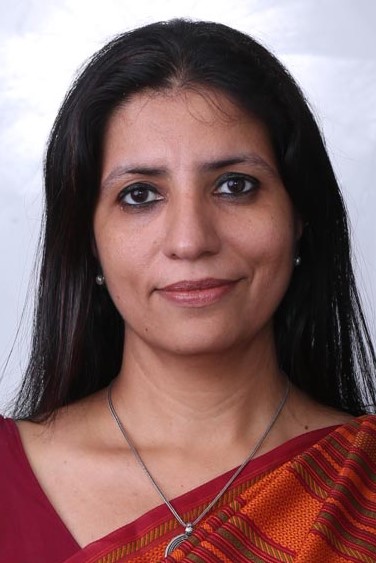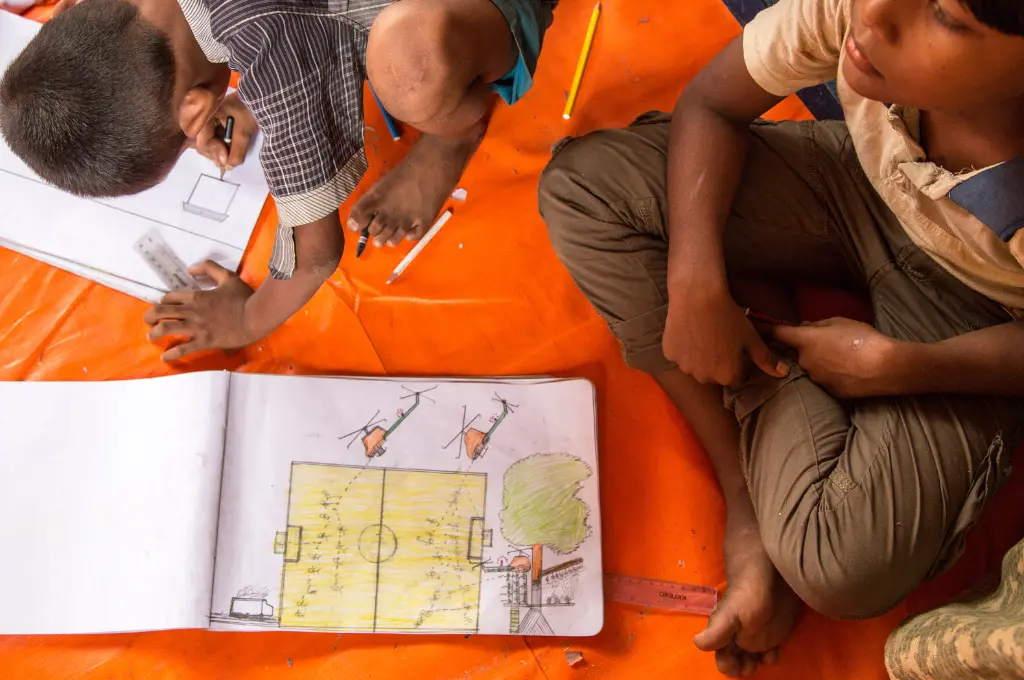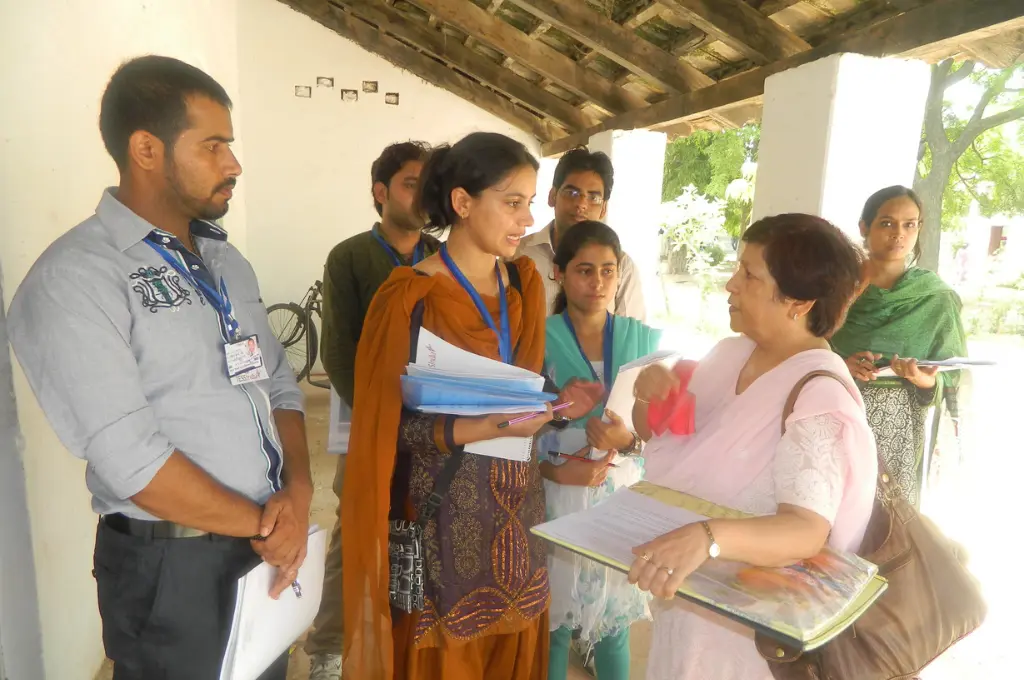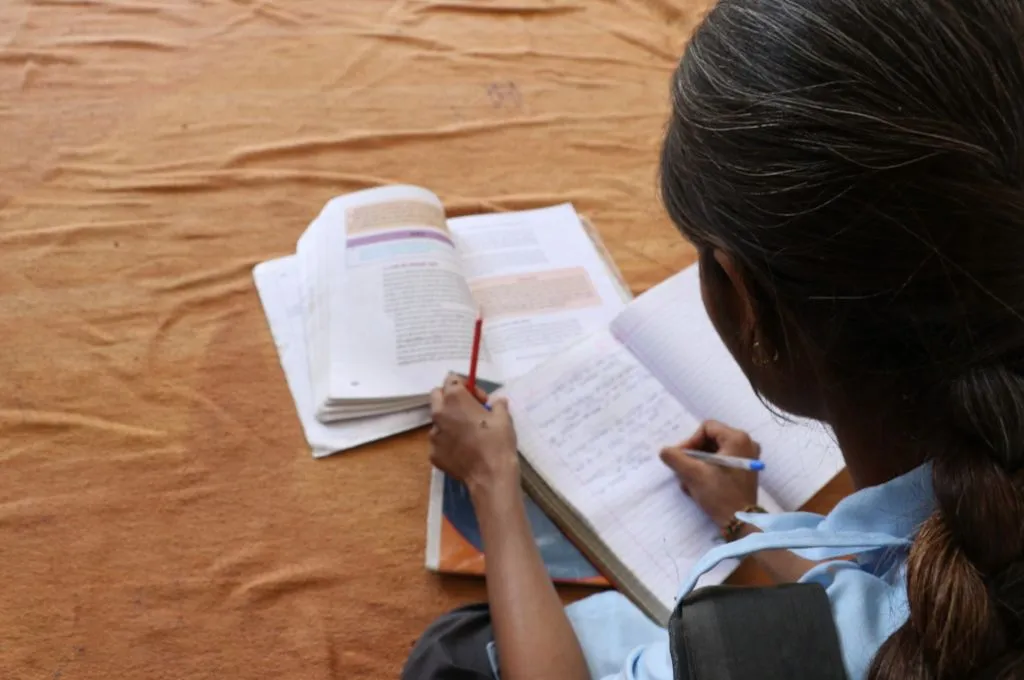We would like to invite you to a small thought experiment. Imagine that you are a poor farmer, based in Bihar. It is the month of May, the middle of summer in India, and you must decide whether to enroll your daughter into middle school. It has been five months since the harvest, and five months since you have earned a decent income. You recognise the returns of your child getting a secondary education, but owing to a poor harvest, you have been unable to save enough for the tuition, and more immediate concerns compete for both your attention, and your resources. Maybe you owe a money lender a sum of money; or the monsoon season is arriving, and you need to repair your roof. Maybe your neighbour is expecting help with paying some medical bills, and you can’t refuse because she helped you out with a loan a few months ago. And anyway, in your village, very few girls your daughter’s age enroll in middle school.
What course of action would you choose?
Behavioural science research tells us that “small differences in context, convenience, and salience have large effects on crucial choices, such as whether to send a child to school, prevent illness, or save to start a business.” In fact, situations of scarcity can deplete mental bandwidth considerably; as this study with Indian sugarcane farmers found.
Differences in time available, nutrition, stress or work effort had no bearing on cognitive performance. Instead, it appears that poverty itself reduces cognitive capacity.
These farmers typically receive their income once a year, at the time of harvest. The study found that the same farmer shows diminished cognitive performance before harvest, when poor, as compared with after harvest, when richer. Differences in time available, nutrition, stress or work effort had no bearing on cognitive performance. Instead, from this study, it appears that poverty itself reduces cognitive capacity.
Contrary to the traditional worldview that most economists held until quite recently—that people are rational utility maximisers—empirical work in the field of behavioural science demonstrates that people don’t always make decisions that are in their best interest. Nor do they take into account all costs and benefits. Research suggests that there is often a gap between one’s ‘intent’ and ‘action’, and that policy and programme interventions that are designed using behavioural science principles, can reduce that gap and help improve development outcomes.
Related article: Using human-centred design to deliver outcomes
Applying behavioural science insights to programme strategy
Recent research has advanced our understanding of the psychological, social, and cultural influences on decision-making and human behaviour, and has demonstrated that they have a significant impact on development outcomes. According to the Organisation for Economic Cooperation and Development (OECD), 202 institutions around the world today are applying behavioural insights to public policy.
The Bill & Melinda Gates Foundation, where we work, has been increasingly making strategic investments in behaviour change communication (BCC) across its verticals, the insights from which are teaching us new lessons about how to more effectively serve the poor, identify problems, design policy, and plan implementation. Here are two examples of how BCC and human-centred design have strengthened our efforts.

Psychological, social, and cultural influences on decision-making and human behaviour have a significant impact on development outcomes | Picture courtesy: Pexels
Banks, fintech companies, government schemes, and mobile network operators are increasingly interested in catering to the poor—an estimated population of 190 million people that currently lack formal access to financial products in India. However, many of the products do not adequately serve the myriad needs of customers; this is partly because when designing them, financial service providers (FSPs) tend to view the poor as a homogenous group who can be categorised using existing frameworks. And so, attempts at understanding their needs are largely limited to inputs such as demographics, socio-economic status, and transaction data. These might help the financial services provider ‘manage’ the client better, but it does little to serve her needs.
Financial service providers tend to view the poor as a homogeneous group who can be categorised using existing frameworks.
We, along with Dalberg and the Centre for Social and Behaviour Change at Ashoka University, commissioned a segmentation study to better understand the poor. Not just on the basis of where they live and what they earn, but how they save, use technology, take risks, plan their finances, trust information sources, and so on. The survey, which had a nationally representative sample of 3,000 respondents, used a combination of demographic (who are they?), psychometric (how do they think?), and behavioural (how do they behave, share, and learn?) metrics to arrive at six distinct customer segments.
Dalberg’s research has thrown up rich portraits of the financial lives of the poor, specifically on how they differ from each other in their scale of ambition, openness to technology, and financial confidence, among other aspects. As per World Bank’s FINDEX, 80 percent of Indians now have an account but only about half of them use it regularly. One of the probable reasons this gap exists is that people don’t find the products relevant to their needs. The study thus lays out key product and messaging design principles for each segment, which service providers can incorporate while designing for their customers.
Related article: Why the goal of digital inclusion is missing the point
The National Nutrition Mission (NNM) aims to reduce the level of stunting, under-nutrition, anaemia, and low birth weight in children, and also focus on adolescent girls, pregnant, and lactating women, to holistically address malnutrition. It has been envisioned as a Jan Andolan, or people’s movement, with more than 100 million people expected to benefit from the programme.
Unlike an intervention such as an immunisation drive for instance—where supply must be fixed before one can address demand—improving nutrition outcomes has to do largely with changing behaviours of individuals, families, and communities. Therefore, as a part of NNM, we supported IDinsight to carry out research to understand behaviours and behaviour gaps when it comes to nutrition.
The government has designated an annual Poshan Maah (nutrition month)—the inaugural one was celebrated in September 2018—which serves as a dedicated time period during which there is heightened activity, attention, and awareness, towards building a people’s movement for better nutrition. As a part of IDinsight’s research, a survey was conducted to better understand the effectiveness of the various outreach platforms that were used to disseminate messaging during Poshan Maah. IDinsight found that while there were over 20 communications platforms used, from digital media to interpersonal communication, there were three platforms with the highest reach and recall: home visits from frontline health workers (FLWs), interactions with FLWs elsewhere, and television. Their research also found that frequency of content is key to ensuring message recall. Such insights now feed directly into work that the Ministry of Women and Child Development and NITI Aayog are leading, among other partners informing key policy and implementation decision
Behaviour change and communication as an approach seems intuitive, and thus often fails to get recognised as a science. Programmes are often designed without sufficient scientific inquiry into human insights and are rarely rooted in behavioural theory and as a result, impact measurement is unable to provide a reasonable explanation for success or failure. However, there are clear strategies and methodologies that can be followed in order to achieve the desired effect.
Today in India, using the right kinds of theoretical frameworks, design principles, and measurement tools are necessary to run effective BCC programmes. If we aim to increase demand for services, improve programmes and outcomes, or positively influence social norms in support of long-term, sustainable behaviour change, we will need more investments in developing local knowledge, talent and capacity so that programmes and policies aimed at nudging changes in behaviour succeed in improving development outcomes.
With inputs and insights from Neela Saldanha, Director, Centre for Social and Behaviour Change.







